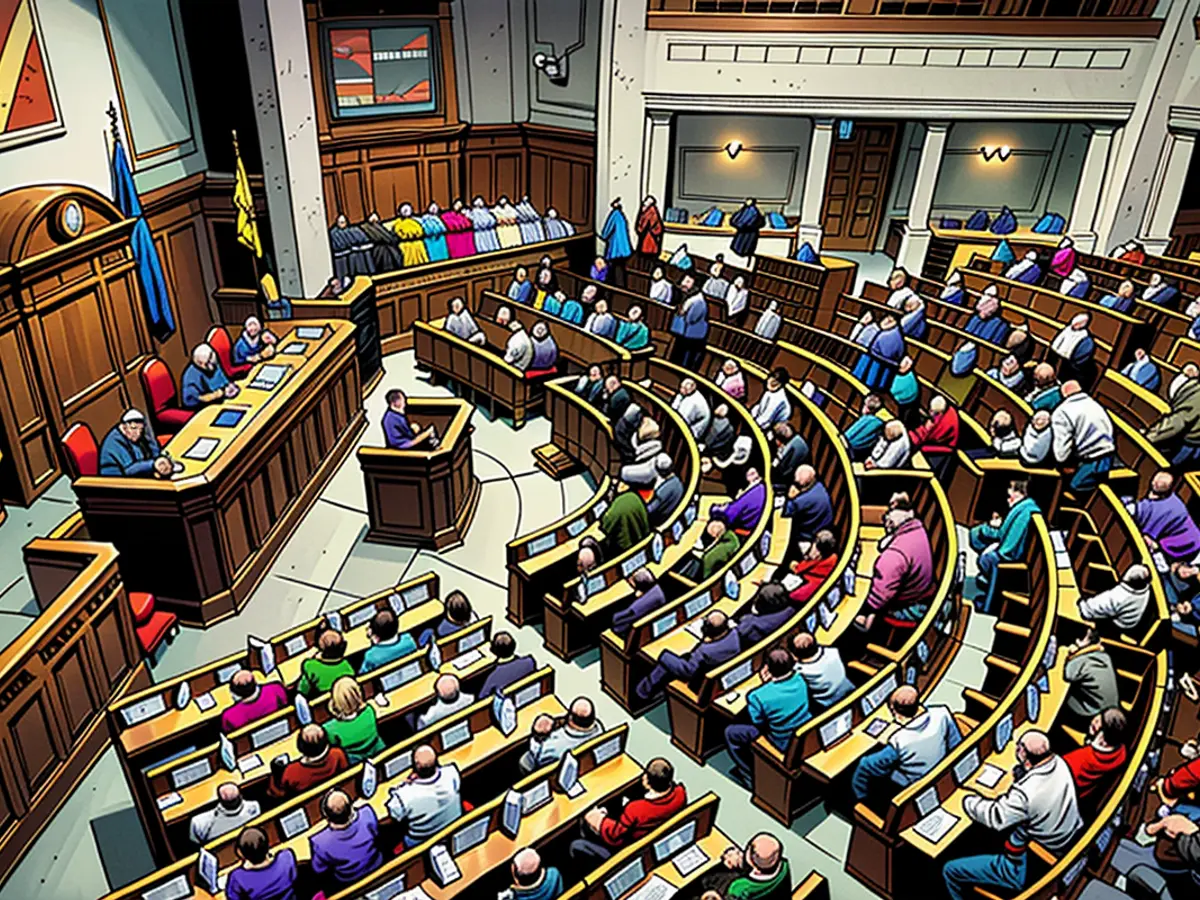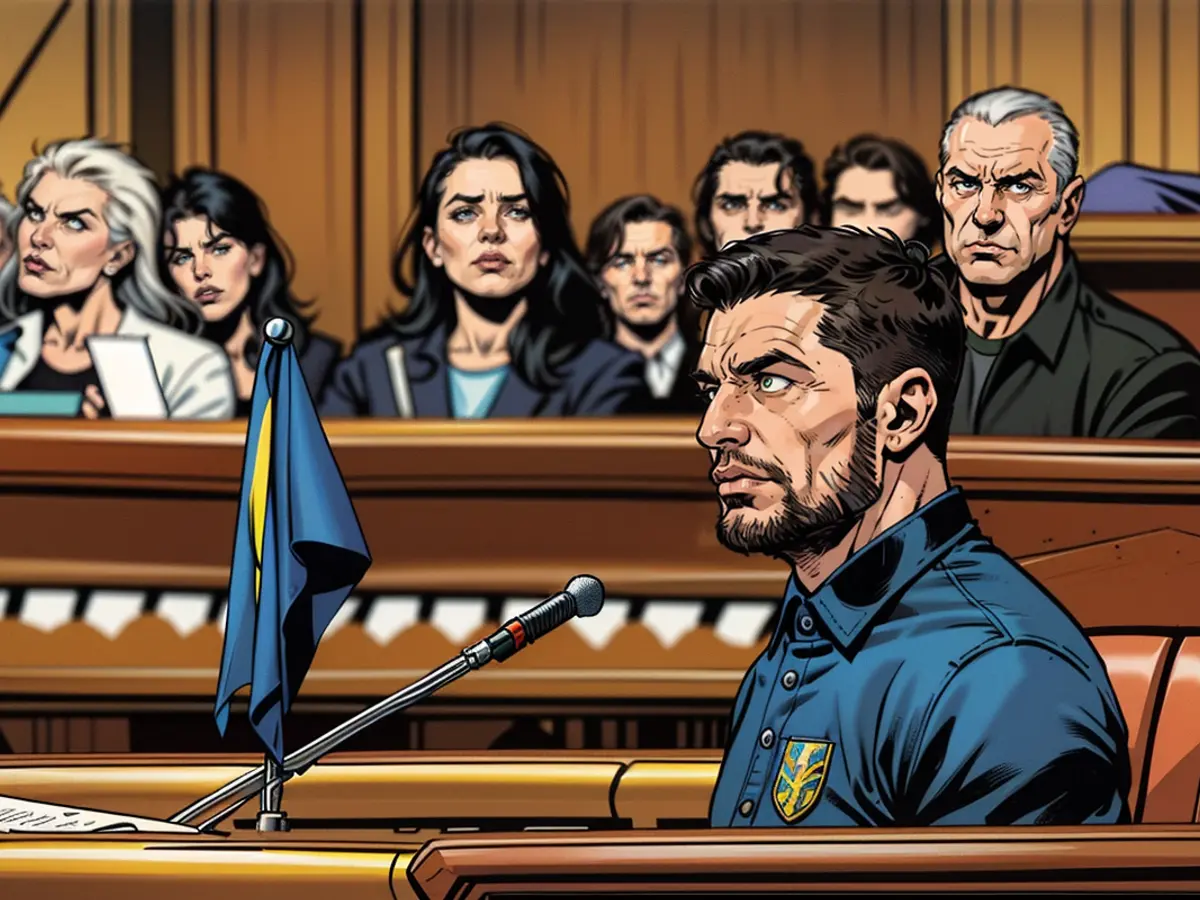Zelensky presents his "Triumph Strategy" following unsuccessful attempts to obtain further assistance from allies
The strategy, comprising five key points plus three confidential sections only shared with selected allies, serves as a pathway towards future talks with Russia, as declared by Zelensky to legislators in Kyiv, aiming to enhance Ukraine's position sufficiently to cease the war.
At the core of the strategy lies Ukraine's aspiration for an invitation to join the North Atlantic Treaty Organization (NATO), seen as a step towards full NATO membership, although many allies remain hesitant with Ukraine still engaged in conflict with Russia.
The strategy encompasses plans to strengthen Ukraine's defense, implement a non-nuclear strategic deterrence plan, and stimulate Ukraine's economy.
Upon implementing this Victory Strategy immediately, Zelensky speculated that the war could potentially end as early as the next year. Addressing his fellow legislators and crucial international supporters, he emphasized.
However, several provisions within the strategy have already been proposed by Kyiv.
During his visit to the White House in September, Zelensky unveiled the victory strategy to U.S. President Joe Biden. In response, the Biden administration announced an increase in aid for Ukraine, offering a $375 million aid package, yet falling short of providing authorization for strikes within Russia.
Biden repeatedly emphasized the importance of supporting Ukraine in its quest for EU and NATO membership, along with incentivizing reforms to combat corruption. Nevertheless, an invitation has yet to materialize.
Prior to his public announcement, Zelensky discussed the peace plan with leaders from the United Kingdom, France, Italy, Germany, and the head of NATO. However, no nations publicly endorsed the plan upon conclusion of Zelensky's tour.
On Wednesday, Peskov, a Kremlin spokesman, criticized Ukraine's victory plan, claiming that Kyiv must "sober up" and acknowledge "the futility of the policy they are pursuing."
Five-point plan
The first aspect of Zelensky’s peace plan is focused on Ukraine's ambition to become a member of NATO and eventually the European Union, goals that Kyiv has consistently advocated for.
The second aspect focuses on bolstering Ukraine’s defense, including enhancing air defense systems and pushing for allies to relax restrictions on using long-range missiles to strike targets deep within Russia. Despite repeated denials from the U.S., these proposals are being considered due to recent setbacks and increased Russian aggression.
On Wednesday, Zelensky called for cooperative defense operations with European neighbors to counter Russian missile and drone attacks. However, NATO's previous secretary-general expressed reservations about this idea, stating that the bloc would not engage in the conflict.
The plan also promotes Ukraine's continued military operations in the Kursk region, which experts view as a crucial bargaining chip for Kyiv in resisting calls for territorial concessions.
Zelensky reaffirmed on Wednesday that Ukraine will not acquiesce to a "freeze" or make territorial concessions. Russia has been attempting to seize the eastern Donetsk region.
“We hear the word ‘negotiations’ from our partners, and the word ‘justice’ is seldom heard. Ukraine is open to diplomacy, but to fair diplomacy,” Zelensky asserted. “That's why we have the Peace Formula, It serves as a guarantee of talks without forcing Ukraine to accept injustice.”
The plan includes a new proposal for deploying a comprehensive non-nuclear strategic deterrence package on Ukrainian soil, which would provide sufficient protection from any military threat from Russia. Zelensky argued that a strong deterrent would encourage Russia to pursue honest diplomacy to bring the conflict to a just resolution.
He subsequently failed to provide further clarification about what a non-nuclear deterrent would entail.
Lastly, Zelensky's peace priorities include fostering Ukraine's economic potential and planning for a post-war future. Zelensky emphasized that Ukraine's military strength could boost European defense post-conflict and eventually replace certain U.S. forces in Europe.
CNN’s Clare Sebastian and Anna Chernova contributed to this report.
This strategy, aiming to strengthen Ukraine's position in the world, includes a goal for Ukraine's NATO membership, which is currently met with hesitance from many allies due to ongoing conflict with Russia in Europe.
Ukraine's peace plan, presented to international leaders, also encompasses the aspiration to join both NATO and the European Union, aiming to enhance Ukraine's role in the world stage.








